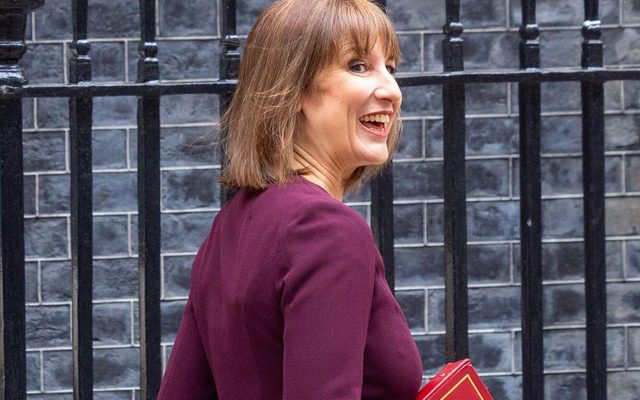This article is from the Australian Property Journal archive
RENTERS’ rights being strengthened and an additional 200,000 homes to be delivered were among a raft of measures agreed to at yesterday’s National Cabinet with the aim of easing the national housing crisis, but critics suggest the moves don’t go far enough.
The extra 200,000 homes agreed upon by the Prime Minister and state Premiers including Queensland’s Annastacia Palaszczuk; NSW’s Chris Minns; Victoria’s Daniel Andrews; South Australia’s Peter Malinauskas; WA’s Roger Cook; Tasmania’s Jeremy Rockliff; NT’s Natasha Fyles and ACT’s Andrew Barr in Brisbane yesterday.
The agreement will form part of a boosted National Housing Accord target, initially agreed to by states and territories late last year, which has been taken from one million to 1.2 million “well-located” homes to be built from the middle of 2024.
“All governments recognise the best way to ensure that more Australians have a safe and affordable place to call home is to boost housing supply,” Prime Minister Anthony Albanese said in a press conference following the meeting.
The federal government has also committed to $3 billion in incentive payments for states and territories that deliver more than their share of National Housing Accord homes, and a Housing Support Program of $500 million targeted to local and state/territory governments to help with the “last mile” on projects to build housing and enabling infrastructure.
A National Planning Reform Blueprint will be introduced with the aim of streamlining and boosting planning and zoning, as well as removing barriers to development approvals that will accelerate housing, including bolstering medium and higher-density housing and rapid delivery of social and affordable housing.
Albanese and the Premiers did not heed the Greens’ calls for a national rental freeze or rental caps – a key plank of their negotiations for allowing the government’s $10 billion Housing Australia Future Fund (HAFF) to pass the Senate – instead opting to introduce a once-per-year limit to rent increases, with no caps.
A large majority of renters already receive rent increases once per year.
Renters were also promised a national base for rental standards, including running hot and cold water and stovetops to be in working order, as well as requirements for genuine reasonable grounds of eviction.
“Today the government just spat in the face of the nearly 8 million people in this country who rent,” said Greens housing and homelessness spokesperson Max Chandler-Mather.
“This is a smoke-and-mirrors announcement designed to make it look like Labor has done something meaningful for renters, when in fact they have basically enshrined the status quo, leaving renters exposed to astronomical rent increases once a year.”
A timeline for the rights to be formally introduced has not been defined given the co-ordination required to pass bills around the country.
“We’re not in a position to flick the switch and just change eight pieces of legislation across states and territories immediately,” Albanese said.
The Australian Institute of Architects said boosting social housing was a ‘good start’.
However AIA national president Stuart Tanner said the institute is concerned about the ongoing inadequacy of social housing supply and Australia’s capacity to realistically deliver this volume of housing in the time available, given construction material and labour shortages.
“In addition, this housing stock should be delivered with quality and sustainability as mandatory,”
“Affordable housing shouldn’t be a luxury, it should be a necessity.”
“The rates of housing stress and unaffordability in Australia are alarming and demand immediate attention,” Tanner said. “In particular, more appropriate homes for First Nations peoples should be a prime concern.”
Property industry bodies were more receptive to the flagged changes.
“These are a suite of serious reforms that, if implemented properly, give us the best chance yet of delivering affordable homes and reasonable rentals,” said Max Shifman, UDIA national president
Property Council of Australia chief executive Mike Zorbas said National Cabinet is “tackling our housing supply deficit in a coordinated way for the first time in a long time”.
“Today, National Cabinet has taken a big-picture approach to housing supply improvements that, if successful, will boost access to housing for all Australians.
“The New Home Bonus, the Housing Support Program, the National Planning Reform Blueprint, the Social Housing Accelerator and the rental deal all strike a sensible balance in progressing toward affordable new housing supply.
“Decades of strategic failure by governments has left us an unacceptably land-rich, housing poor nation. There is a deficit of supply in social, key worker and at market housing across the country.”
HAFF remains in limbo
The government made a last-ditch bid in June to get the Greens onside ahead of the recent parliamentary recess, pledging $2 billion that would go directly to states and territories within weeks to deliver new social and community housing, and guaranteeing a floor for annual spending by the HAFF.
But the parties remain at loggerheads over the flagship fund. Having already been rejected by Parliament, failure to meet the demands of the Greens in the Senate could trigger a double dissolution election after the Greens teamed up with the Coalition to defer a vote on the bill in the Senate until 16th October.




